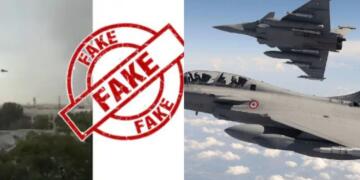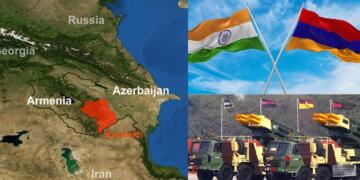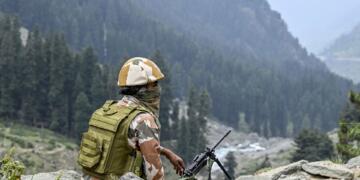India is scheduled to get the delivery of the first four of its 36 Rafale fighter aircraft on July 27 this year. The Print has reported that the fighters will be combat-ready earlier than expected. Meanwhile, the fighters are already proving their worth in the Mediterranean. The 4.5 generation aircraft are giving some tough time to the Turkish forces in battlefield Libya.
Libya is currently embroiled in a tough battle over a power struggle between the UN-backed Government of National Accord (GNA) that is also supported by Turkey, and the opposition faction of the Libyan National Army (LNA) which has the backing of the undisputed leader of the Muslim world, Saudi Arabia, and other countries like Russia, Egypt, with France and Italy.
LNA’s Haftar is being viewed by the world as a better leader, while the LNA offers a highly Islamist regime and this is where the Muslim world stands divided. Turkey has been sending in reinforcements and largely Syrian mercenaries despite a UN arms embargo on Libya which has enabled the GNA to push back Haftar’s LNA forces.
Although the official line of the European Union coincides with that of the UN to back the GNA but the Mediterranean countries, especially France has been secretly supporting LNA as Paris has its own vested interests in the region.
It has been time and again reported that France has sent covert military help to LNA. Macron is wary of terrorism and has some other interests (like Oil fields) and therefore its stance has put it at odds with that of the EU’s position.
And now with Turkish President, Erdogan’s move to convert Hagia Sophia, an ancient Cathedral-turned-Museum into a Mosque, Christian-majority European countries of Italy and France might be looking to impose tough costs on Turkey in Libya.
218 News has reported that the French fighter aircraft has destroyed the Turkish missile defence system at its Al-Watiya airbase. The media house has reported that according to an informed source the airstrikes were conducted on Saturday night by a French Rafale aircraft from about 70 kilometres away.
In what confirms the long-range precision of the Dassault-made aircraft, two Turkish defence systems located inside the Turkish base were targeted. One of the systems was completely destroyed while the other one wasn’t.
Turkish Ministry of Defence has confirmed the reports of airstrikes. An official said that the attack against Turkish positions “has damaged some systems at the air base”. But he did not disclose the specifics of the damage caused.
Recently, the GNA also condemned an attack on a recaptured airbase carried out by a “foreign air force”. GNA Deputy Defence Minister Salah al-Namrush said, “The raids last night against Al-Watiya base were carried out by a … foreign air force in support of the war criminal [Haftar] in a miserable and desperate attempt to achieve a morale boosting victory.”
According to reports, the identity of the Air Force that hammered the Turkish mercenary forces cannot be ascertained. But given that Rafale was involved in the airstrikes, it is clear that the attacking power has to be either France or Egypt because only these two countries possess the advanced aircraft in the Libyan conflict.
Initially, the Turkish mercenaries were pushing back the opposition faction led by Haftar, but the entry of Rafale could be turning the tide against Ankara and the GNA. The French aircraft could turn out to be the deciding factor in Libya.
The Libyan battlefield can turn out to be the testing ground of Rafale aircraft as the conflict deepens further. And the French aircraft is likely to come out in flying colours, as is becoming clearer from the initial reports.
In fact, this is not the first time that the French aircraft is getting tested on a battlefield. The Dassault-made aircraft has proven its combat abilities across the world time and again. It has delivered in combat missions in Afghanistan, Iraq, Syria, Libya and Mali.
In Libya itself, the Rafale aircrafts entered the battle-field in 2011. These were the first aircrafts to operate in the skies of Benghazi and Tripoli and the multi-role aircraft performed all its designed functions- air-superiority, precision strikes with HAMMERS and laser-guided bombs, deep strike with SCALP cruise missiles, Intelligence, Surveillance, Tactical Acquisition and Reconnaissance (ISTAR) and Strike Coordination And Reconnaissance (SCAR).
According to Dassault Aviation, “During the Libyan conflict, hundreds of targets – tanks, armored vehicles, artillery emplacements, storage dumps, command centres and air-defense systems (SA-3 Goa and SA-8 Gecko fixed and mobile SAM launchers) – were hit with devastating accuracy by Rafale aircrews.”
The 4.5 gen fighter aircraft packs quite a punch, and in Libya they could corroborate how they will be a force multiplier for the Indian Air Force (IAF).
Moreover, the Rafale aircraft that India will receive will come with unique modifications including the ability to take off from high-altitudes like Leh. So, the next time there is an Eastern Ladakh stand-off like situation, India will have the enhanced ability to overpower the PLA Air Force.
Rafale is a one of its kind aircraft and is possessed by only a few militaries including France, Egypt and Qatar. With India also receiving the aircraft, there is an added advantage. The airstrike on Turkish base from a distance of 70 kilometres through a Rafale aircraft also shows the relative ease and safety with which India can hit Pakistani targets in case another Balakot-like operation has to be carried out.
The use of Rafale in Libya is going to enhance New Delhi’s ability to create a deterrent effect against Pakistan and China. As the brutal war-machine consumes Turkish mercenaries, Islamabad and Beijing will realise the added costs involved in case of a limited armed conflict with India.


































